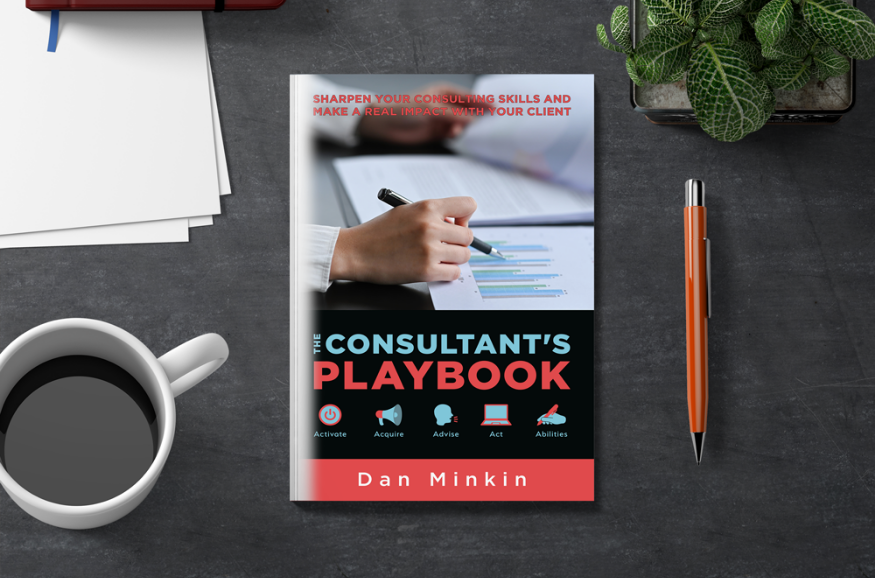The Consultant’s Playbook Chapter 2 – Acquire
The Consultant’s Playbook Chapter 2 – Acquire, discusses the process of articulating your offering during sales and contracting activities.
The objective of the activities in this chapter is to win business so that you can provide your services to clients. It is at this point that you articulate your services, and the benefits they can deliver, to eventually reach an agreement with a client to work together. It covers the period where the two parties involved in the consulting relationship – you as the consultant, and the client – make themselves visible to each other and agree to do business together. This stage is marked by a gradual coming together over time, with a final stage of being tied into a mutually beneficial arrangement by formally making an agreement.
The two elements of Acquire, are Sales and Contracting.
![]() Sales is the act of making contact and communicating with potential clients so that they might consider doing business with you. The objective is to generate leads and create opportunities for you to deliver consulting engagements. In larger organisations, this may be performed by a separate sales or account function. In smaller organisations, it is often performed by the same individual who performs the engagement itself. Either way, selling and consulting are almost inseparable. There are three types of leads in Generating and Managing Leads:
Sales is the act of making contact and communicating with potential clients so that they might consider doing business with you. The objective is to generate leads and create opportunities for you to deliver consulting engagements. In larger organisations, this may be performed by a separate sales or account function. In smaller organisations, it is often performed by the same individual who performs the engagement itself. Either way, selling and consulting are almost inseparable. There are three types of leads in Generating and Managing Leads:
- Reactive leads. This includes an incoming enquiry, introduction via a contact or referral via an existing client, a call from a previous colleague or relationship or an introduction via a partnership.
- Proactive leads. This includes a cold call, a call to a previous relationship, a contact at a conference stand, or a lead from a campaign or because of a speaker slot.
- Competitive leads. This includes leads from government and supplier panels, marketplaces and requests for proposals RFPs.
After Lead Generation the next activities are establishing the opportunity and qualifying the opportunity:
- Establishing the opportunity explains arranging to meet (timing, duration, venue and content/style of invitation, starting to build trust, and agreeing next steps).
- Qualifying the opportunity provides a set of questions to help you decide if the opportunity is worth your time and effort to commit for any potential benefit you may gain. A few example questions are:
- Is there budget to start?
- Is there current or future potential to cross-sell (other services)?
- Does this work fit with the agreed consultancy strategy and plan?
![]() Contracting is an iterative step, performed every time a new piece of work is agreed in principle, where you and the client finalise the agreement to work together. The purpose of contracting is threefold:
Contracting is an iterative step, performed every time a new piece of work is agreed in principle, where you and the client finalise the agreement to work together. The purpose of contracting is threefold:
- to unambiguously detail the agreement between the parties while setting precedent for the working arrangements.
- to confirm the agreement to proceed.
- to provide a risk-reduction mechanism for both parties through contractually enforceable means.
The proposed agreement how needs to be documented, reviewed and signed. This may be a single document known as a proposal, or multiple documents, including the contract (sometimes known as the Statement of Work, Services Agreement or Terms and Conditions).
There are also considerations for your pricing strategy and some problems that may occur at the point of sign off.
Interested in finding out more?
To find out more about this Chapter, see the how-to-activities, processes, guidelines, diagrams, and checklists and delve further into The Consultant’s Playbook you can order your own copy from Amazon or buy from any Barnes and Noble store. Just follow this link here

